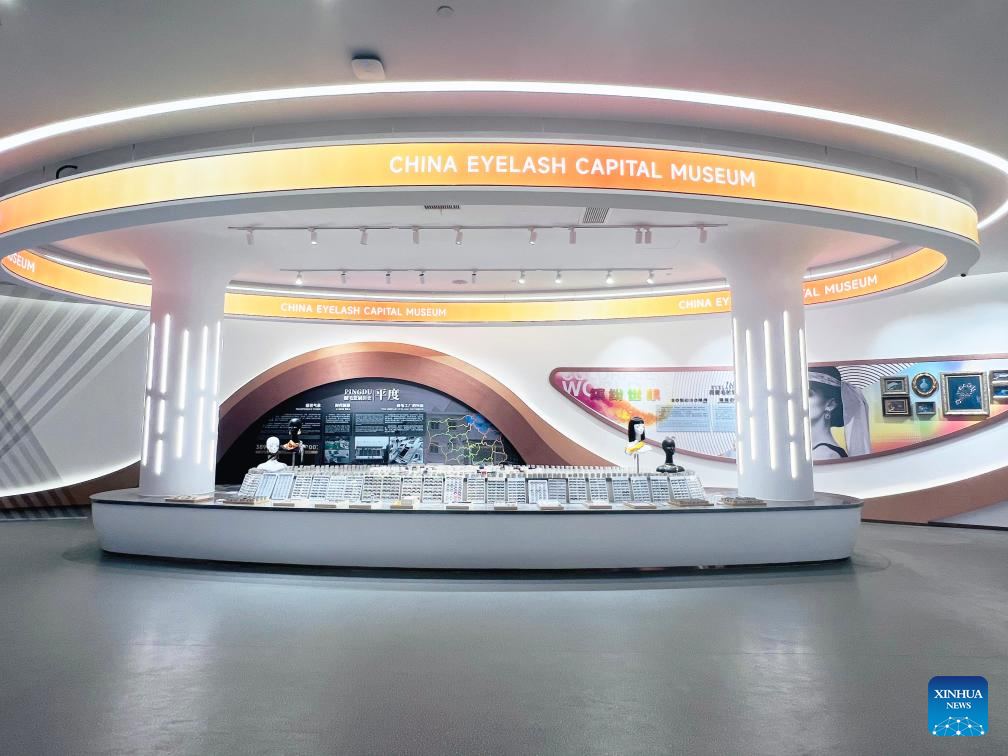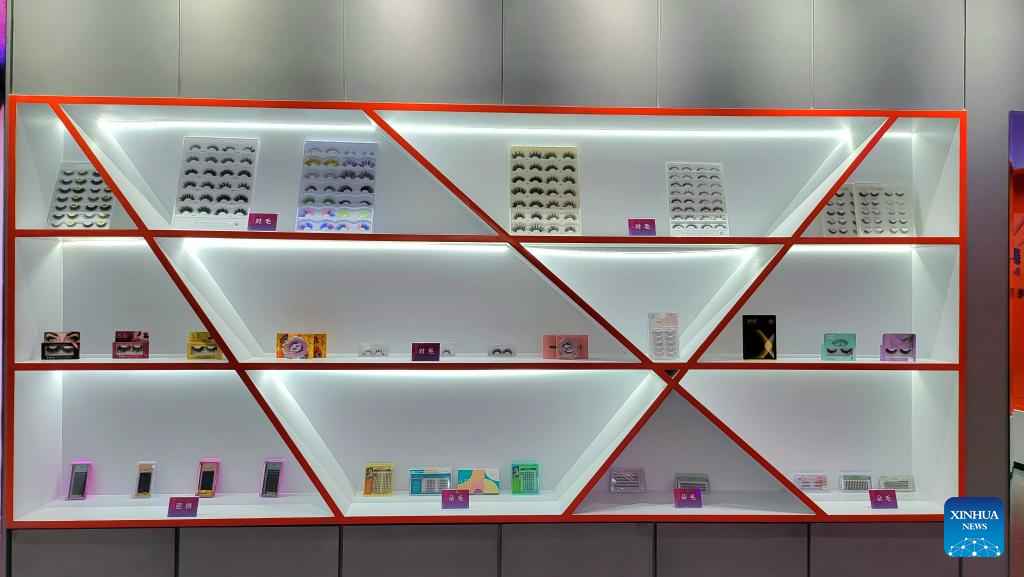
This undated file photo shows a false eyelashes museum in Pingdu, east China's Shandong Province. (Xinhua)
JINAN, July 23 (Xinhua) -- Before Zhang Fan goes to work every morning, the last step in her makeup routine is to put on false eyelashes.
"The brown ones are very charming. They look like drooping sunflowers," she said.
To many women like Zhang, false eyelashes are a daily necessity. However, few people know that they were made in Pingdu, a county-level city in eastern China's Shandong Province.
Known as the "capital of false eyelashes in China," the town of Dazeshan is home to 3,895 false eyelash factories producing about 70 percent of the false eyelashes across the world in more than 3,000 different styles and categories. Strolling along the streets one could find signs with the word "eyelashes" everywhere.
According to Han Songming, executive chairman of the cosmetics and eyelash association of Pingdu, the history of false eyelashes stretches back to 2000 BC, with references in ancient Egyptian and Roman literature. In the 1930s, false eyelashes began to be worn by Hollywood actresses and then became popular all over the world.
Development of the false eyelash industry in Pingdu began in the 1970s, when business people from the Republic of Korea (ROK) came to Shandong to open factories in Qingdao City. A villager from Dazeshan, surnamed Cui, used to work in one of the factories, and brought the skill back to his hometown.
More people soon joined the false eyelash industry. As the industry grew, local enterprises sent their workers to Europe, America, Japan and the ROK to learn the advanced technology, which saw a marked increase in the quality of the false eyelashes produced in Pingdu.
"Compared with the workshops where my dad used to work, the industry now is more standardized, mechanized and digitized," said Wang Haibo, general manager of the Qingdao Boxiu False Eyelash Crafts Co. Ltd. who is among the second generation of workers in Pingdu.
Although small in size, false eyelashes are not easy to make, requiring nine workers to complete seven steps.
With the increase of labor costs, Pingdu is facing increasingly fierce competition both domestically and internationally.
"We can only keep our competitiveness through innovation," said Wang.
After several attempts, his innovation team found artificial mink hair to be an ideal material for false eyelashes, as it is both cheaper and more environmentally friendly compared with real mink hair. "The new products were welcomed by the European and American markets," said the manager. "On average, we turn out a new product every two or three months now."
In addition, Pingdu has an industrial park with an entire eyelash production chain, which helps lower costs. The park partners with universities to keep abreast of, and adopt, any advances in technology and equipment.
"With the new equipment, the production efficiency increased by more than five times," said Pan Xinyu, the operation manager of the Qingdao beauty online new economy industrial park.
The false eyelash industry has generated job opportunities in Pingdu for local people, especially women. Currently, more than 50,000 people, out of the city's population of 1.37 million, are involved in the industry.
As living standards improve, health and beauty are given more prominence, as so the false eyelash market continues to be promising.
According to the white paper on China's eyelash industry released in October 2023, the growth rate of nail and eyelash salons reached 33.7 percent in 2022.
Wang Haibo is optimistic about the development of the domestic market. "There is a huge consumer group and strong purchasing power in the domestic market, and people are paying more attention to quality of life and beauty," he said. "There is great potential to tap for the false eyelash industry." ■

This undated file photo shows false eyelashes produced in Pingdu, east China's Shandong Province. (Xinhua)



